What Google Play's first birthday means to you

One year ago, March 6, 2012, Google renamed Android Market, and nothing is the same sense. The rebranded Google Play pushed forward a transition started in November 2011, with the broad expansion of content beyond apps. The name change also represented something bigger, shift in emphasis away from broader Android to the search giant's siloed services and brands. Google sought to imitate Apple while tackling wild Amazon.
On Play's first birthday, Google Android -- not the skinned software Amazon, HTC, LG, Samsung and others ship -- is a 98-pound weakling gone super steroids. The Mountain View, Calif.-based company sells apps, ebooks, gift cards, magazines, music, movies, TV shows and devices through the online store. There were no devices available a year ago, but now accessories, Chromebooks, smartphones and tablets. Three different computers are available, including the new and Google-branded Chromebook Pixel. Also: Two different Nexus 4 smartphones and Nexus 10 tablets and three Nexus 7 slates -- four if counting 32GB HSPA+ models twice, with different cellular SIMs.
Ubuntu Touch -- interesting concept that needs work [preview]
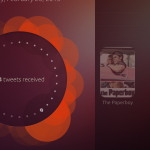
The concept of Canonical taking a stab at the mobile market eludes me. Unless we want to split hairs, which I know will happen, Android already is the Linux ambassador across the globe, so why would the world need Ubuntu Touch? Furthermore, any new player starts out with a clean slate, which means many consumers will be skeptical at purchasing devices running the new operating system and therefore developer interest does not surpass a low threshold.
The PC market is not what it used to be a couple of years ago when people rushed out to buy new computers, rather than tablets or smartphones first. In some ways Canonical right now is Microsoft before Windows Phone and Windows 8 -- an important player further heading into obscurity down the road unless the boat steers in the right direction. Ubuntu Touch is supposed to give the world a breath of fresh air, the X factor that would sway enough people into switching from Android, iOS, Windows Phone or a feature phone, even.
Better hurry! Nexus 4 is free from T-Mobile
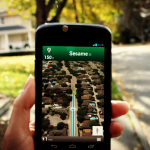
The LG-made, Google-branded Nexus 4 made quite a splash when it debuted, but some of that attention was for the wrong reasons. The phone was almost impossible to grab, even at launch. Since then, supply problems have continued, extending from the T-Mobile online and brick-and-mortar stores to the Google Play Store.
If you think demand issues were bad before you may not have seen anything yet. Today T-Mobile dropped the price on the Android 4.2 handset all the way to zero.
Android 4.2.2 rolling out for Nexus devices
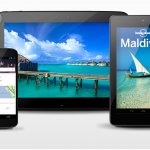
Google Nexus owners, unlock your devices and start checking for updates because Android 4.2.2 Jelly Bean is now rolling out. The latest software version is reportedly hitting Galaxy Nexus, Nexus 7 and Nexus 10 devices, with no word at the moment relating to the Nexus 4.
The Android 4.2.2 update bumps up the build number to version JDQ39 and mostly appears to contain minor fixes. No official changelog has been provided by Google at this moment, but users are reporting improvements for Bluetooth streaming which now presents "less hicups [...] but still not perfect" with apparent disconnects when switching from Wi-Fi to cellular data.
Google Play now sells Orb wireless charger, but WHY?
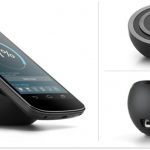
If you really want to part with $59.99 (plus shipping and tax), the long-anticipated Orb is for sale. Timing coincides with fairly consistent Nexus 4 availability (about time for that) from Google Play. Forgive my total lack of enthusiasm. Gimme a Nexus 10 dock or something else useful rather than just geek.
My wife and I both now own Nexus 4, but neither of us pines for Orb. One of the phone's features (I wouldn't say benefits) is wireless charging. You slap the handset down on the half-sphere, which juices the battery in Stargate Universe-like fashion. I've got a chord for that, free with the phone, that charges faster than the four fraking hours Google claims for Orb. That said, there is something Star Trek-cool about using the phone round and about, while charging, without actually being plugged in.
Nexus 4 is back in stock, but for how LONG?

In the United States, Google Play has both Nexus 4 models available for sale -- after nearly two months stocked out. The bumper is available, too. If you're one of the gadget geeks looking for this smartphone, get it while you can, and that might not be for long.
Google launched Nexus 4 on November 13, but sold out in just hours. The phone reappeared on November 27. A day later, Google Play redefined "sold out" by listing shipment date as 8-9 weeks. From a retail distribution perspective, Nexus 4 is pure disaster. It's anyone's guess how many could have sold over the holidays, but greedy gadget geeks couldn't get the phone short of paying extortion-like prices.
Google Q4 2012 by the numbers -- $14.42B revenue, $8.62 EPS
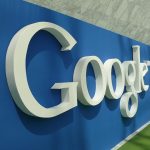
Today, I formally begin covering Google earnings, as I have done for Microsoft (a decade) and Apple (about six years). This first report won't be as thorough as the others, as I get my head around the financials, which share little in common with APPL and MSFT other than money. Today's earnings announcement is refreshing respite from third quarter's, when an incomplete press release pushed out early and while the market was open.
For calendar fourth quarter, revenue rose 36 percent to $14.42 billion, year over year; net revenue, excluding Traffic Acquisition Costs, was $9.83 billion, up from $8.13 billion. Net income climbed to $2.89 billion up from $2.71 billion. That's $8.62 earnings per share, including costs associated with discontinued operations. Operating income was $3.39 billion, down from $3.51 billion year over year.
CyanogenMod 10.1 M1 -- first monthly release -- is available

Keeping up with recent CyanogenMod tradition, the team behind the popular green droid custom distribution unveiled the first monthly release based on Android 4.2 Jelly Bean. The build is designed to offer users a stable experience, more suitable for daily use compared to the usual nightly builds.
CyanogenMod 10.1 M1 is currently available only for a limited number of devices, including the Google Nexus lineup (Nexus S, Galaxy Nexus, Nexus 7 including the 3G variant, Nexus 4 and Nexus 10), the US variants of the Samsung Galaxy S III, the Samsung Galaxy S (codename "galaxysmtd" and "galaxysbmtd"), the Samsung Galaxy Tab 2 7.0 (versions P3100 and P3110), the Samsung Galaxy Tab 10.1 (versions P5100 and P5110) as well as the Hardkernel ODROID U2 open development platform.
It's easier to win the lottery than buy Google Nexus 4
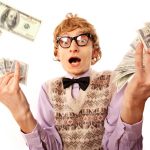
The Nexus 4 was anything but a secret long before Google officially raised the curtain on October 29, last year. Impressive specs, affordable price, the promise of timely upgrades, all were compelling arguments as to why I must buy one when sales start. However, Google didn't care about my enthusiasm and had other plans in mind, offering the smartphone only to a limited number of markets. Lucky me, I'm not invited to join the party. So what can I do?
Like any passionate, but patient, enthusiast my first thought was to buy one from the German Play Store, the closest one to my location and with the lowest prices as well, instead of moving to another country or shelling out more than $500 or $600 on eBay. So I asked a colleague of mine to help me out. I would pay for the Nexus 4 and he would send it my way after receiving the package. Easier said than done, obviously, as I shortly found out that Google only accepts credit cards issued in Germany. That was Plan A, by the way. OK, but now what?
Converting an LG Optimus G into a Google Nexus 4? It can be done!
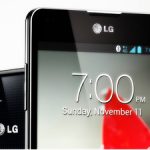
When Google unveiled the Nexus 4 in late-October, the resemblance to the LG Optimus G was quite obvious. Both smartphones are manufactured by LG and share mostly the same hardware specifications (bar the full-blown 4G LTE chip, different camera module, and extra internal storage found on LG's device). So why can't the Optimus G run software designed for the Google Nexus 4? Well, as of late, it can.
The advantages of "transforming" the LG Optimus G into a Google Nexus 4, in the software department that is, are quite clear. First and foremost, users can install various custom distributions such as AOKP Jelly Bean MR1 Build 1, CyanogenMod 10.1 or even light AOSP-based builds. Second, the LG Optimus G can actually be purchased from different carriers as well as online shops, whereas the Nexus 4 even today is out of stock at Google's Play Store -- which makes the former a suitable alternative to the latter's lack of market availability.
AOKP Jelly Bean MR1 Build 1 available

Little more than three months since the last build, breaking away from the previous Sunday release schedule, the team behind Android Open Kang Project (AOKP) unveiled Jelly Bean MR1 Build 1. The latest build represents the first official release based on Android 4.2, sporting most of the custom distribution's traditional features.
The work on Android 4.2-based builds started from scratch after Google released the latest green droid operating system, a "tough decision" according to the team behind AOKP. At the moment, Jelly Bean MR1 Build 1 delivers most of the previously known features such as widely customizable navigation bar, including buttons, color or widgets to name a few, custom vibrations, LED Control, lockscreen targets, Quiet Hours and advanced sound settings, among others. However, there are some new features included as well.
My tech life completely changed in 2012

I join colleagues Mihaita Bamburic, Alan Buckingham and Wayne Williams recounting what tech I used in 2012. But unlike them, I made dramatic platform changes, more significant than first using Windows over New Years holiday 1994, buying a reburbished PowerBook in February 1999, adopting Facebook and Twitter in 2006 or purchasing Nexus One in January 2010. Each of these marked major platform changes -- and some not always lasting. Consider this: in early 2012, I owned a 1.8GHz Intel Core i7 MacBook Air, iPhone 4S and iPad 3. I end the year using Chromebook and Android smartphone and tablets.
During the year I moved from OS X and Windows running on Intel to an ARM-and-Chrome OS laptop, and after several failed attempts at adopting tablets (three generations of iPads, really), I embraced not one but two Android slates. I store all my data in the cloud -- local storage is now merely a way station between destinations rather than personal repository. This old dog is learning new tricks, and if I make such dramatic platform changes what does that mean for younger users who are more flexible and not as financially or habitually Apple/Microsoft/Intel committed? Look around, the PC era rapidly evaporates around you and its disappearance will be difficult to ignore in 2013.
Google, bring back Nexus Q
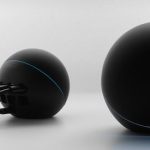
Nexus devices are largely sold out this holiday season. Supply can't meet demand, particularly the new smartphone. But one Google gadget is missing altogether, pulled before official sales started. I've got Nexus Q, and you should be able to have one, too. The entertainment device is quirky, but I like it. Surely there is stock sitting around in some warehouse somewhere. Sell it out, Google. Give geeks something else to clamor for and recover some of the development and manufacturing costs.
The sphere-shaped device is a remarkable product, and changes fundamental concepts about digitally-delivered entertainment. Users stream music or movies from the cloud, using Android smartphone or tablet as remote control. The approach solves a fundamental end-user problem with digital content: Simple sharing.
A third of Android devices now run Ice Cream Sandwich and Jelly Bean
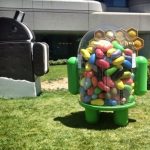
Jelly Bean may be the youngest member of the Android family, but it’s also enjoying some amazing month-on-month growth, based on the number of devices accessing Google Play during the 14 days ending December 3. It still has some way to go to match Gingerbread though, which is yet again the green droid ruler.
On November 13, the search giant introduced its latest sugary treat, Android 4.2. Three weeks later, the new version of Jelly Bean had claimed a distribution level of 0.8 percent, a number aided by Nexus 4 and Nexus 10 sales, and Galaxy Nexus and Nexus 7 upgrades. That growth however, pales in comparison to 4.1 Jelly Bean which is now found on 5.9 percent of green droid devices, an increase of 118 percent when compared to the previous figures released in early November.
iPhone 5 is now available off-contract

Well that was fast. Little more than two months after Apple launched the iPhone 5 in nine countries, the Cupertino, Calif.-based software corporation offers its latest smartphone free of any carrier obligations. Pricing starts at $649 for the 16GB model and tops $849 for the 64GB version.
The models that Apple offers are actually unlocked GSM units, meaning that using either of the three available versions on a CDMA network such as Verizon Wireless is not possible. For the advantage of owning a carrier-free iPhone 5 prospective buyers have to shell out an additional $450 for the equivalent version available at major US carriers such as AT&T, Sprint or Verizon.
Recent Headlines
Most Commented Stories
BetaNews, your source for breaking tech news, reviews, and in-depth reporting since 1998.
© 1998-2025 BetaNews, Inc. All Rights Reserved. About Us - Privacy Policy - Cookie Policy - Sitemap.